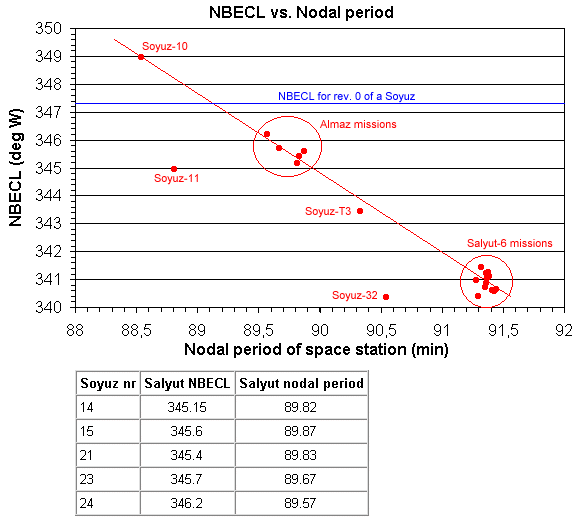

The NBECL of rev. 0 for a Soyuz is marked. All launches below this line means that the Soyuz is trailing the space station at launch. Interestingly, the very first Soyuz to dock with a space station, Soyuz-10 was launched so that it was ahead of the station. This meant that it approached Salyut-1 from in front and above. This was never done thereafter. Clearly, this was necessary, because the period of Salyut-1 at that point was so low (88.4 minutes), that it would have been diffcult to keep a lower period in order to catch up. The only alternative was to go higher and slower! Also, if one looks at the orbital period of Salyut-1 at the time of launch of Soyuz-10, one realizes that the Soyuz-10 flight was done in a great hurry. The station was decaying quickly and no maneuver had been performed to raise the orbit. that was performed just after Soyuz-10 had undocked! This drama is clearly seen in the graph below.